SEO Title Examples and Tips To Help You Get More Traffic
We live in an age of continuous online creation, where a lot of the responsibility for SEO has been placed on the body of content we write for any given page.
However, the truth is that it doesn’t matter how good written content is if it’s not going to capture the attention of search engines or readers alike. In fact, on average 80% of readers never make it past the headline.
An SEO title is the bridge that connects these two divides.
So much so, that a good title has been rated by Moz as the second most important factor affecting a page’s ranking.
The problem is that writing titles can be really difficult, especially when you’re at the last stages of a project and need to consider people and the algorithm.
But it doesn’t have to be.
By the end of reading this article, you’ll know what an SEO title is, as well as some essential tips and examples on how to use it to increase traffic to your website.
What is an SEO Title?
An SEO title, also commonly known as a title tag, is what shows up in the search engine results page (SERP) and browser tab once you’ve looked up an enquiry.

Though the SEO title may be the same as the page title, it’s not always the case.
The Effects of Incorporating SEO Into Your Title
The importance of incorporating SEO into your title can’t be overstated.
Firstly, having a good title helps to increase your click-through rates (CTR). Whether it’s in your sentiment or something more practical, users will likely engage more with a title that conveys a benefit and is easy to read.
So much so that in their analysis of 4 million Google search results, Backlinko found that something so simple as having a positive title improved CTR by approximately 4%. The higher the CTR, the higher the chances of your page ranking favourably.
In addition, a recent article by Slickstream highlighted the fact that if Google doesn’t think your title accurately represents the content you’re sharing, it will automatically change how your page is displayed on the results page.
Having a good SEO title means that Google won’t go ahead and rewrite your title tags, leaving you with full autonomy over how users will view and interact with your content.
How to Write a Good SEO Title (With Examples)
It’s one thing to know you need to write a good SEO title, but another one altogether to know how to write one well.
Navigating the maze of SEO title-writing myself, I’ve found relying on these five simple tips can help streamline the creative process, helping you to get results you can be excited and proud of.
1. Understand Your User (and Offer Something Useful)
A good SEO title is tailored to your user’s intention. Readers may be struggling with something specific, and having a title that addresses their concern will be more enticing to them than one that doesn’t.
Try to identify your reader’s problem, and how taking the time to scroll through your article may help bring them closer to a solution.
For example, a common complaint with house plants is that people don’t know how to care for them properly. The GQ article below knows this and has created a title that directly offers an answer to this concern.

The different intents of titles can also be seen in the comparison between commercial and informational pages.
For instance, commercial titles tend to be more direct. And for good reason.
Suppose you’re writing a title for a vegan boots collection page, for instance. In that case, you want to deliver on your promise by leading with the primary keyword and taking away any ambiguity for the user.
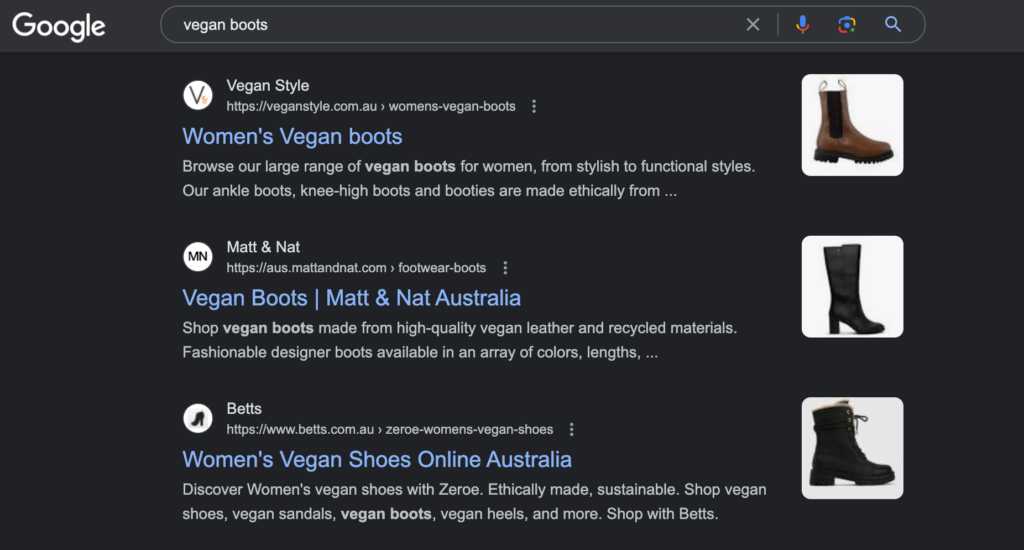
On the other hand, informational pages can be more creative since they’re not so specific. When I search for the best fabric for bed sheets, articles suggested vary from best materials to pros and cons of each, and even how to choose between them.
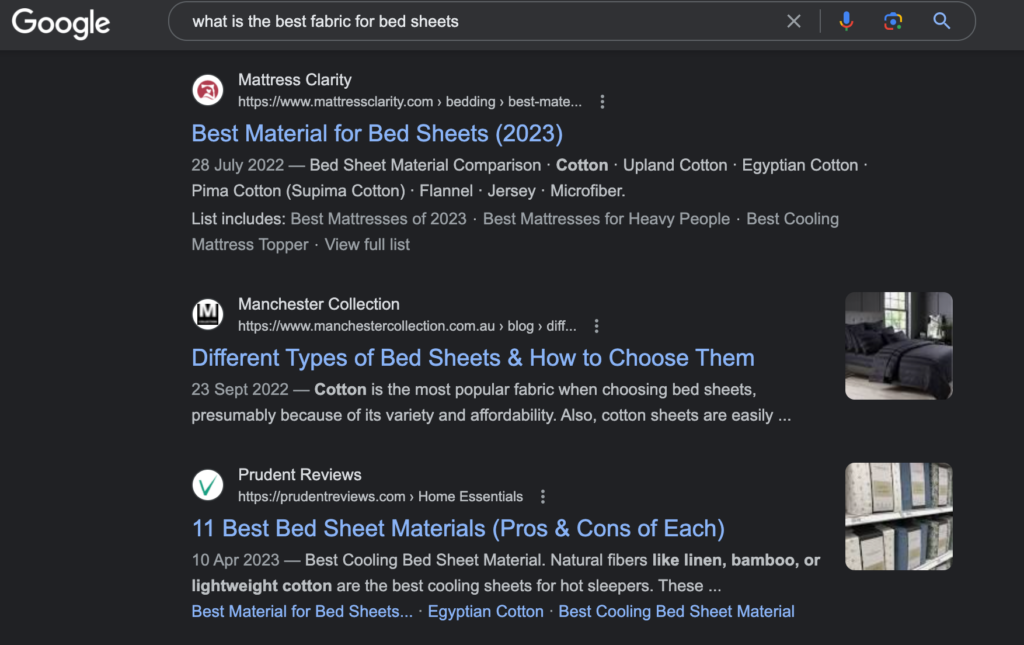
It’s important to remember that the style of the title will also be niche dependent. When searching for recipes, the top results for content will be similar and are differentiated more by the featured image than by the words used.
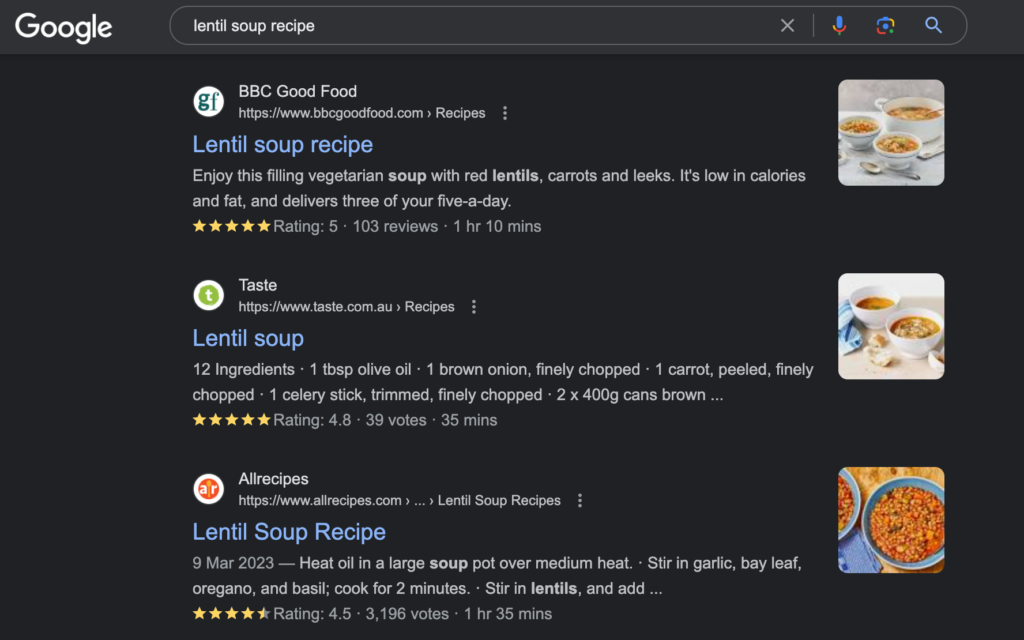
The main takeaway?
Being able to offer something useful comes down to developing a good understanding of the user’s intention.
You can do this by setting up a customer persona, either by considering somebody the type of customer you’d like to purchase from your brand or alternatively a profile for somebody who you’d like to read your article.
You can find more about customer personas and how to create them here.
2. Choose a primary keyword
If you’re interested in optimising your title for SEO, you’ve likely heard of keywords.
But since the possibilities for keywords feels endless, it can be easy to get lost and lose focus.
Identifying your primary keyword enables you to combine your reflections on user intent by finding a word or phrase that summarises what it is you want to write about and what’s desired by your readers.
The important thing here is not to shoot for the moon and aim for the most competitive terms. Instead, find a primary keyword that has sufficient search volume and a low difficulty that will enable your page to stand out in the sea of search results.
To do this, you can use paid platforms like Mangools.
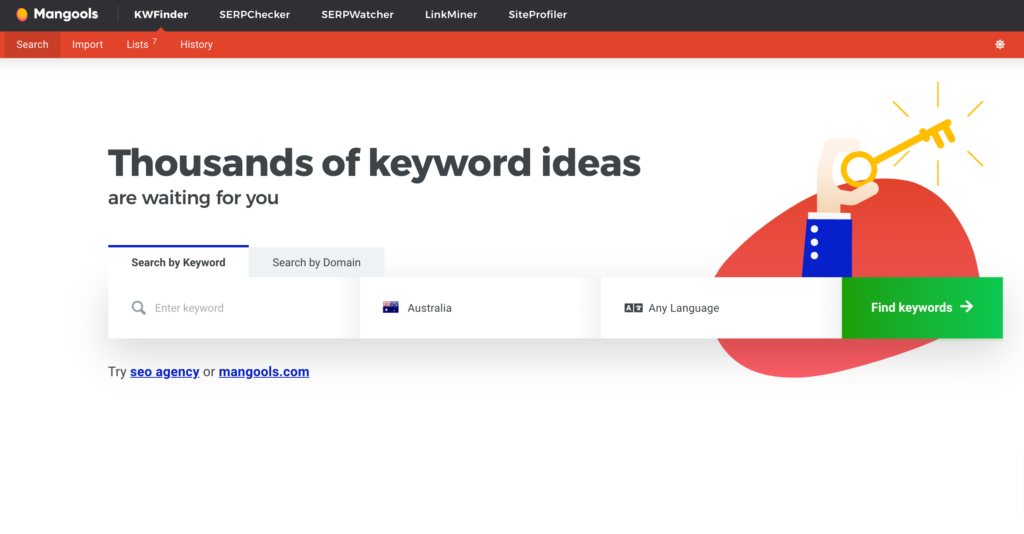
Remember, you don’t want to overdo the number of keywords in the title, so just choose one primary keyword to focus on.
That being said, Ahref found that on average the highest ranking page for one keyword will also rank well for approximately 1,000 other revelant keywords. This means if you want to include some secondary keywords, you can, but be sure to check that they remain relevant to the user’s intention.
An added bonus when incorporating keywords into your title is their placing. As most users read from left to right, and we don’t know exactly how many characters Google cuts from titles, you want to reduce any uncertainty about what your page is about by putting your primary keyword closer to the front.
Not being able to do so can have a negative impact on CTRs, especially if the competing pages are clearer. Someone researching on Google Search is likely to have a strong sense of urgency, which is a different mindset to someone reading their favourite website.
The success of this can be seen with the primary keyword “best headphones”. All top-ranking articles have the primary keyword close to the front, suggesting this placing is favoured by both search engines and readers.
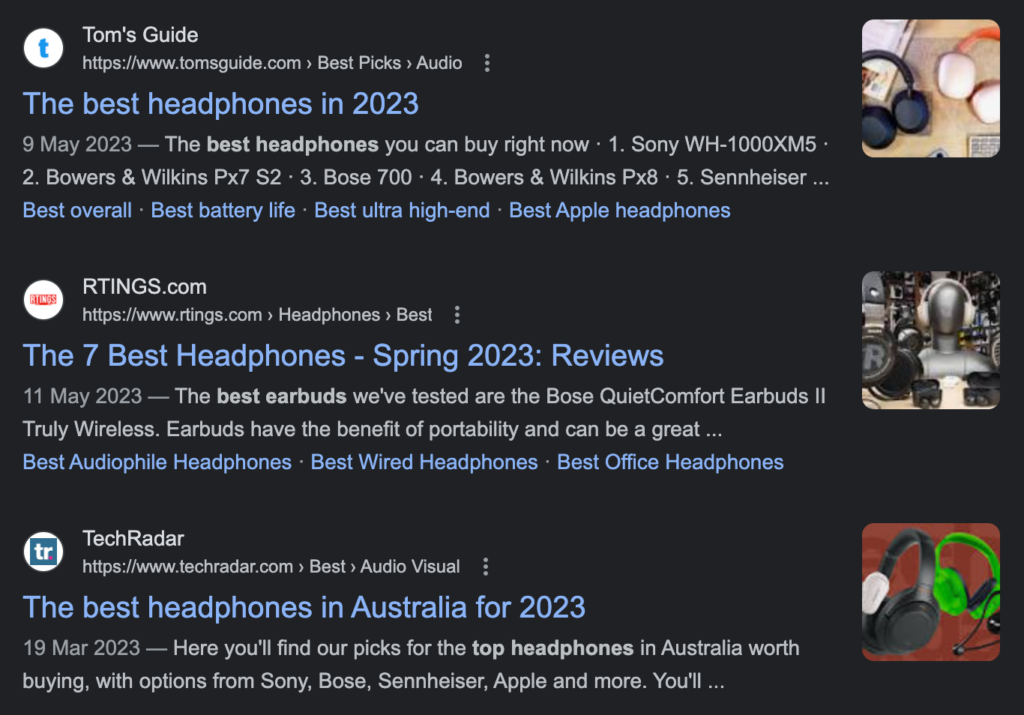
3. Be direct.
When writing an SEO title, it’s important not to clickbait your readers into thinking they’re going to receive a result they’re not going to.
A good example of a direct title is this eco-friendly gift guide.

The title tells us they’ve got a list of 30 eco-friendly gifts, meaning we know what to expect when we click on it.
At the end of the day, you want your readers to have a positive experience on your page and have a page title that reassures them (and Google) that they’re in the right place.
4. Keep the title short and simple
To provide a clear yet helpful title for your readers, it’s essential that they can read it fully. This means using simple words that the user will understand and making sure the full title is displayed in the SERP.
This can be challenging, as Google rewrites 61.6% of titles, with overly long or overly short titles being one of the major victims. To avoid this situation, it’s best to keep your SEO titles within 50-60 characters, or 600 pixels, to avoid Google truncating it.
For an example of truncation, see the title below. Though it’s telling us we’re guaranteed to rank, we don’t have the ability to read where that ranking will be. Perhaps we’re looking to rank on a specific search engine, or we have a certain amount of time we want to rank in. A title like this may be too long to consider, and users may find themselves heading to the next article.

A good SEO title example is this blog from HubSpot. The writer has made sure to be direct and clear whilst using language that’s engaging and helps offer guidance for people struggling with SEO.

One of the best ways to see how users will experience seeing your SEO title is the use of a SERP preview tool. There are plenty online that you can access, including the following:

5. Different SEO Title Vs. Blog Page Title
As mentioned earlier, the SEO title and the blog headline are often similar. But they don’t have to be.
A blog title can be longer, giving you the space to use more engaging language and provide context at the start of your article to entice the reader to continue browsing your content.
According to marketing expert Neil Patel, having a different SEO and blog page title also organically enhances your SEO. This is because you can use two different sets of keywords, doubling your impact.
A good example of a different SEO and blog title is shown on the following page on best hikes around Sydney by The Urban List.

From the SERP, you’d expect that the headline would be “The Best Hikes Around Sydney And NSW 2023”, however, when you go on to the page itself the result you find is slightly different.

Instead of adopting the SEO title, which is more focused on“best hikes” in “2023”, the page headline is more leisurely, tuning in to the keyword “scenic hike”, which appeals to the aesthetic aspect of being in nature.
They’ve also opted to use a list format, which according to a recent study by Moz, is the most preferable headline format, 15% more than when compared to titles that addressed the reader directly.
Don’t be Afraid to Experiment
A big part of learning how to write SEO titles well is not being afraid to experiment with your style to see how this affects your ranking outcomes. Don’t hesitate to use your own brand or blog as a case study to see how changing your SEO title can affect whether readers do or don’t engage with your content.
As an example, a major Australian ecommerce company added the word “Buy” to one of their page titles to see if it would increase the attractiveness of their search results.
What they found was astounding.
After 21 days of testing, the company saw clicks increase by 8.3%. And that was considered a small change.
At the end of the day, writing an SEO title is not an isolated task. Even after you’ve let your article roam free amongst search results, it’s important to continue monitoring its success and seeing what you can do to make improvements in the future.
What to Avoid
It can be easy to get caught up in how to write a good SEO title, so much so that you forget what to avoid.
The main things to stay clear of when coming up with a catchy and engaging one-liner for your audience are repetition or the use of many keywords that make your title no longer readable or human.
Let’s have a look at the following example.

If you’re hoping to write an article on house plants, there’s no need to add additional keywords to the SEO title. Instead, if it’s an informative piece, try thinking of a more unique way of sharing what it is you want to say.
Other general tips:
- Try to avoid putting your company name at the front of an article unless you are a highly reputable company
- Avoid superfluous language
The Bottom Line
Navigating SEO titles and how to write them well can be a challenging experience, especially if you’re just starting out.
A good place to begin is by implementing the five best practices mentioned above. By doing so, you should start seeing the results you’ve been hoping for and generating SEO titles you can be excited about.
It’s important to remember that no list is definitive, and the details of SEO titles and what makes them work can be nuanced. So be sure to experiment and use your findings as a guide to find what works best for your site.
The good news is that like with all things in life, it’s only a matter of time and practice before you start getting the hang of it.






